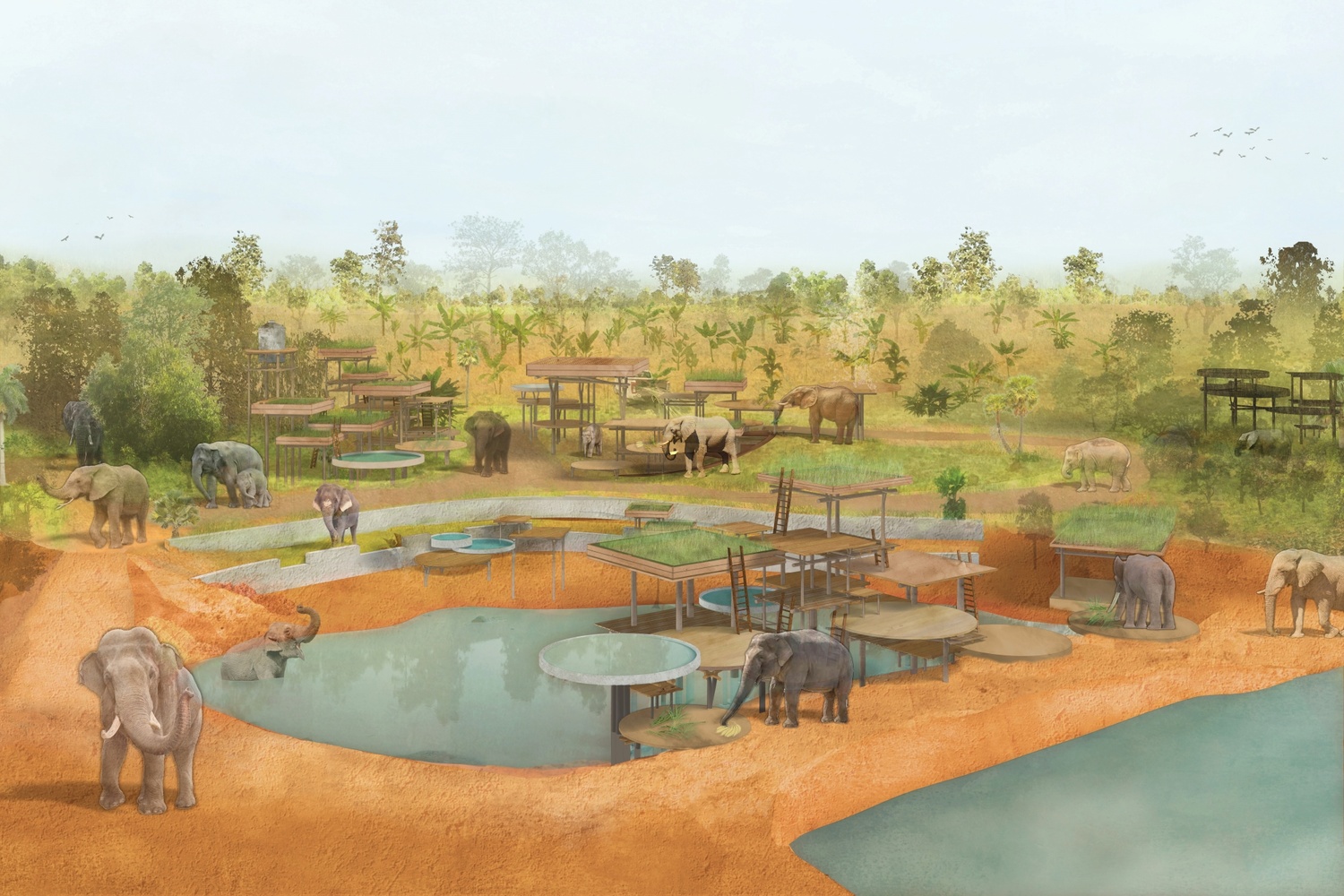In Ban Taklang elephant village, the lives of elephants and their mahouts (handlers) are enmeshed; they eat and sleep under the same roof. Mahouts prioritize their elephants’ nutrition, constantly providing fruits and vegetation and walks to water. Because 80% of their day is spent eating, elephants’ food security and the village’s economy are closely correlated. For financial and climatic reasons, accessibility and generation of food is complex and distribution is inefficient. During the arid summer season, agriculture in Ban Taklang village is compromised due to lack of rich soil, irrigation, and water recycling systems.
To enhance the elephants’ health and happiness and also Ban Taklang’s economy, the project is an interconnected system of occupiable multi-scale table typologies catered to elephants for dining and resting, water collection during the monsoon season, and passive farming. The domestic table form is an adaptation of the way mahouts’ houses essentially function as a table for elephants: they eat from the raised deck, from the mahout’s hand, and from piles of food in the yard. Located on the bank of a pond along a forest path, the tables are a pitstop for elephants and mahouts, while facilitating community engagement in a local farming cooperative.






